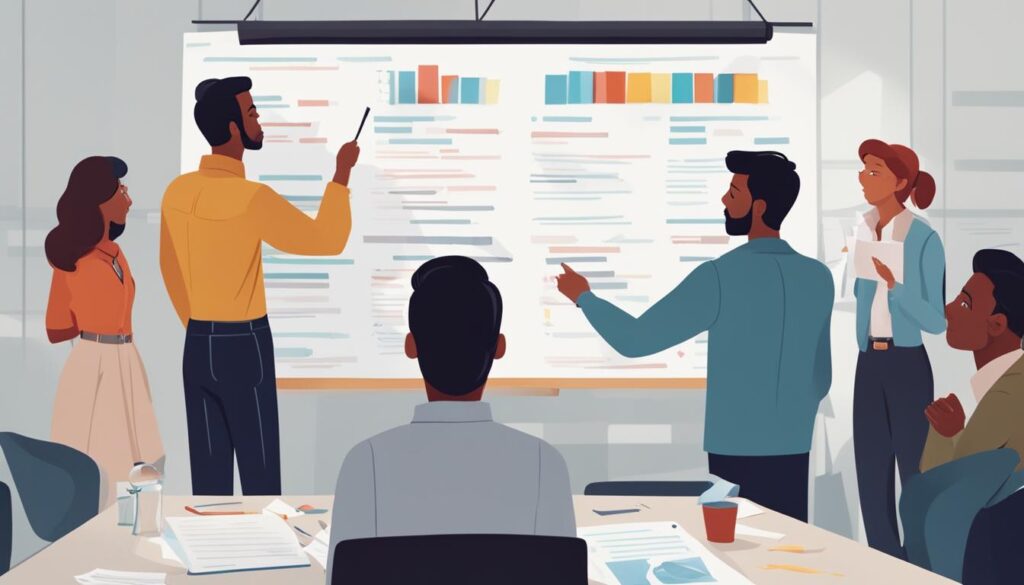We may earn money or products from the companies mentioned in this post.
As an educator, one of the essential skills you need is the ability to create effective handouts and materials for your students. Whether you’re preparing printed materials or digital resources, the quality of your handouts and materials can make or break a learning experience. In this comprehensive guide, we’ll explore the strategies and techniques for mastering handout and material preparation.
From planning and organizing to designing engaging and user-friendly materials, this guide will equip you with the tools you need to enhance your teaching methods and improve student outcomes. You’ll also learn how to create interactive activities that promote active learning and engagement in the classroom.
Preparing printed materials and digital resources require different approaches and techniques. While printed materials require careful formatting and layout, digital resources can incorporate multimedia elements for enhanced student engagement. This guide will cover all aspects of handout and material preparation, so you can deliver impactful learning experiences.
Key Takeaways:
- Handout and material preparation is a crucial skill for educators to improve their teaching methods and student outcomes.
- Effective handouts and materials require proper planning, organization, and engaging design.
- Printed materials must be carefully formatted and laid out for optimal readability, while digital resources can incorporate multimedia elements for enhanced engagement.
- Creating interactive activities can promote active learning and facilitate effective teaching.
- This guide will equip you with the tools you need to master handout and material preparation for impactful learning experiences.
Understanding the Importance of Handout and Material Preparation
When it comes to teaching, creating handouts and designing materials are crucial aspects that cannot be overlooked. Proper handout and material preparation can make a huge difference in the learning experience of students.
Creating handouts not only provides students with relevant information but also helps to keep them focused on the topic at hand. Meanwhile, designing materials helps to enhance the overall impact of the learning experience.
Material design is key to making sure students can consume the provided material in a way that is easy to understand and engaging. It also helps students to recall the information presented.
By creating well-designed handouts and materials, educators can facilitate effective teaching and engage students in active learning. Effective handout and material preparation can help to drive student success and create a positive learning environment.
Planning and Organizing Your Handouts and Materials.
Handout and material preparation can be overwhelming, especially if you’re not sure where to start. That’s why planning and organization are crucial. Before diving into the preparation process, take some time to determine the content, structure, and format of your handouts and materials. This will help you stay focused and avoid feeling overwhelmed.
Identify the Learning Objectives
The first step in planning your handouts and materials is to identify the learning objectives. What do you want your students to learn from the handouts and materials? You should have a clear understanding of what you want to achieve before you start creating your handouts and materials. This will help you create materials that are focused and targeted towards achieving specific learning outcomes.
Gather and Organize Content
Once you have identified the learning objectives, the next step is to gather and organize the content. This may include text, images, videos, and other multimedia elements. Be sure to consider the format that works best for your class. Do they prefer reading printed material or digital handouts? This will help you determine how to present the content in a way that is most accessible to your students.
Organizing the content is crucial for clarity and focus. Consider grouping related information together and using headings or subheadings to provide structure and organization to the handouts and materials.
Create an Outline
Creating an outline is an essential step in planning your handouts and materials. This will help you organize your content in a logical and coherent sequence. The outline should include headings and subheadings that reflect the organization of the content. Consider using bullet points or numbered lists to break down complex information into manageable sections.
Review and Refine
Once you have created your outline, take some time to review and refine it. This is an opportunity to ensure that the content is presented in a clear and concise manner. Be sure to remove any unnecessary information and double-check for accuracy. You may want to seek feedback from colleagues or students to make sure that the materials are effective and relevant to their learning needs.
Effective handout and material preparation starts with proper planning and organization. By taking the time to plan and organize your content, you can create materials that are focused, accessible, and effective in achieving specific learning outcomes.
Designing Engaging and User-Friendly Handouts
The design of handouts plays a critical role in capturing the interest of the audience. Poorly designed handouts can turn off your students and prevent them from engaging with the material. To prevent this, here are some techniques for creating visually appealing and user-friendly handouts:
Use a clear and legible font
Choose a font that is easy to read, such as Arial or Times New Roman. Use a font size that is big enough to be read from a distance, but not so big that it takes up too much space on the page. A font size of 11 or 12 is usually adequate.
Keep it simple
Avoid using too many colors or graphics. Keep the design simple and clean, so that the focus remains on the content of the handout. Use headings, subheadings, and bullet points to break up large blocks of text and make the information easier to digest.
Incorporate multimedia elements
Integrating multimedia elements, such as images and videos, can make your handouts more engaging. However, use these elements sparingly and ensure they are relevant to the topic at hand.
Consider the overall layout
The layout of your handout can greatly affect its usability. Ensure that the content flows smoothly and that there is enough white space to prevent the handout from looking cluttered. Consider using columns or tables to organize information in a logical manner.
Proofread and edit
Before finalizing your handout, ensure you thoroughly proofread and edit the content. Check for spelling and grammar errors, as well as inconsistencies in the design. Solicit feedback from colleagues or students to ensure your handout is comprehensible and engaging.
Formatting and Layout for Printed Handouts
When preparing printed handouts, the format and layout are crucial elements that can impact the readability and effectiveness of your materials. Here are some tips to keep in mind:
- Choose the right font: Selecting the right font is essential for ensuring your handouts are easy on the eyes. Choose a font that is clear, legible, and easy to read, such as Arial, Times New Roman, or Calibri.
- Consider your color scheme: When it comes to color, less is usually more when creating handouts. Stick to a limited color palette, and use color sparingly to highlight important information or headings.
- Use headers and subheaders: Divide your handout into sections using headers and subheaders to make it easier for your audience to find and understand the information they need.
- Optimize for readability: Use a font size of at least 12 points for body text, and make sure there is enough white space on the page to prevent your handout from looking cluttered.
By following these tips, you can create printed handouts that are well-formatted, easy to read, and visually engaging.
Creating Interactive and Dynamic Digital Materials
With the increasing use of technology in education, creating digital materials has become an essential part of handout and material preparation. Teachers can use digital materials to enhance the learning experience by incorporating interactive elements and dynamic content. Below are some strategies for preparing engaging digital materials:
1. Choose the right tools
The first step in preparing digital materials is to choose the right tools. There are various tools available, including PowerPoint, Google Slides, and Prezi, that can help you create visually appealing and interactive digital materials. Make sure to select a tool that suits your needs and preferences.
2. Incorporate multimedia elements
One of the advantages of digital materials is the ability to incorporate multimedia elements such as videos, images, and audio. These elements can help to break up text-heavy materials and provide a more engaging and dynamic experience for students. However, it’s essential to use multimedia elements judiciously and ensure they align with the learning objectives.
3. Use interactive elements
Interactive elements such as quizzes, polls, and games can make digital materials more engaging and encourage student participation. These elements can also provide valuable feedback to teachers on students’ understanding of the content. However, it’s essential to ensure that the interactive elements are relevant to the learning objectives and align with the students’ level of knowledge and skills.
4. Consider accessibility
When preparing digital materials, it’s essential to consider accessibility and ensure that all students can access and use the materials. This may involve using alt text for images, providing captions for videos, and ensuring that the materials are compatible with screen readers and other assistive technologies.
5. Test the materials
Before using digital materials in the classroom, it’s essential to test them thoroughly to ensure they work as intended and are free from technical issues. This may involve testing the materials on different devices and platforms and seeking feedback from colleagues or students.
By incorporating these strategies into your digital material preparation, you can create engaging and dynamic materials that enhance the learning experience and promote effective teaching.
Engaging Students with Interactive Activities
Handouts and materials can be more effective when they include interactive activities that allow students to actively engage with the content. Here are some ideas to consider when creating interactive activities:
- Use quizzes or questionnaires. Incorporating quizzes or questionnaires into your handouts can help students assess their comprehension of the material. Additionally, quizzes can be designed to provide instant feedback, allowing students to know what they need to review further.
- Provide group activities. Group activities can be a fun and engaging way for students to collaborate with their peers. Consider including group discussion questions or group projects that can help students apply what they’ve learned.
- Include simulations or games. Simulations and educational games can provide a hands-on approach to learning. Consider incorporating activities that allow students to apply what they’ve learned in a fun and interactive way.
- Encourage self-reflection. Self-reflection activities can help students think critically about the material and how it applies to their own lives. Consider including self-reflection questions or journal prompts to encourage students to think deeper about the content.
By incorporating interactive activities into your handouts and materials, you can create a more engaging learning experience for your students. Don’t be afraid to get creative and think outside the box when designing your activities!
Conclusion
Handout and material preparation is a critical component of effective teaching and learning. By following the strategies and techniques outlined in this guide, you can enhance your skills and create impactful handouts and materials that foster student engagement and facilitate effective learning.
Remember to start the preparation process with proper planning and organization. Determine the content, structure, and format of your handouts and materials, and stay organized throughout the preparation process.
Design visually appealing handouts that are easy to read and understand, and incorporate multimedia elements to make them more engaging. For printed handouts, optimize readability and ensure the content flows smoothly with the right fonts, colors, and page layout.
Prepare dynamic digital materials that can enhance student engagement and facilitate effective learning, and incorporate various types of interactive activities into your handouts and materials to promote active learning and student participation.
Mastering handout and material preparation requires some effort and attention to detail, but the results are well worth it. Your students will thank you for providing them with engaging, informative, and impactful handouts and materials that facilitate effective learning in the US.
FAQ
What is the importance of handout and material preparation?
Handout and material preparation is essential as it enhances the learning experience, facilitates effective teaching, and improves student engagement.
How can I plan and organize my handouts and materials?
To plan and organize your handouts and materials effectively, you should determine the content, structure, and format beforehand. Staying organized throughout the preparation process is also crucial.
What techniques can I use to design visually appealing handouts?
To create visually appealing handouts, you can utilize techniques such as selecting appropriate fonts, colors, and incorporating multimedia elements to enhance engagement.
What should I consider when formatting and laying out printed handouts?
When formatting and laying out printed handouts, it is important to consider factors such as font selection, color usage, and optimizing readability to ensure the content flows smoothly.
How can I create interactive and dynamic digital materials?
To create interactive and dynamic digital materials, you can use various tools and techniques that can enhance student engagement and facilitate effective learning experiences.
What types of interactive activities can I incorporate into my handouts and materials?
You can incorporate a wide range of interactive activities into your handouts and materials, such as quizzes, games, group discussions, and hands-on experiments, to promote active learning and student participation.
Affiliate Disclosure: This post may contain affiliate links. If you purchase through our link, we may receive a small commission, but at no additional cost to you. For more information, please see our Disclosure statement.



